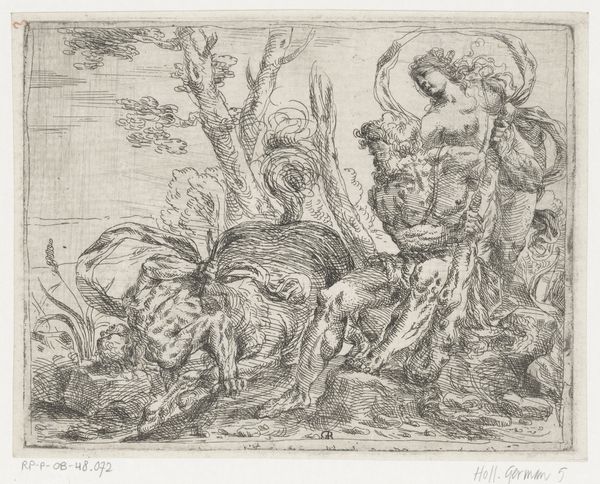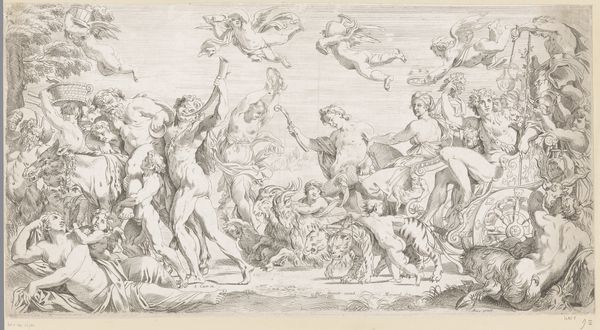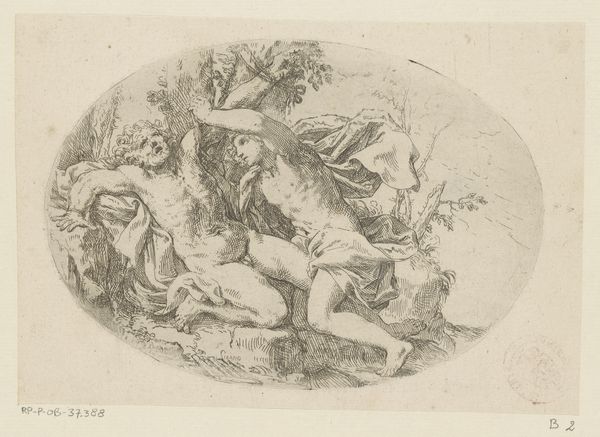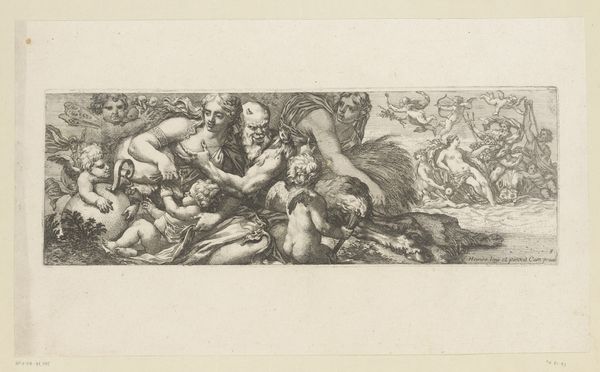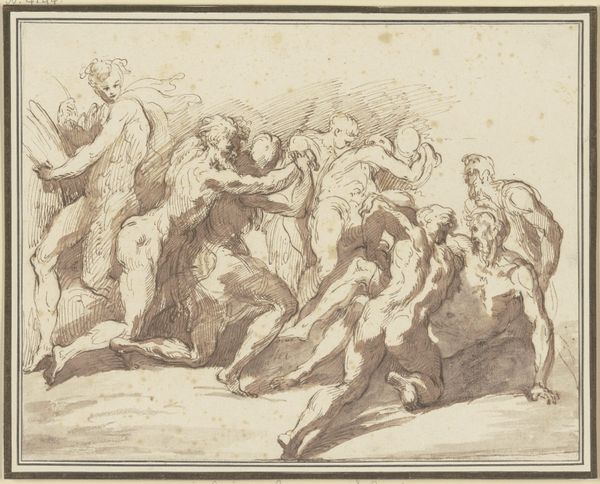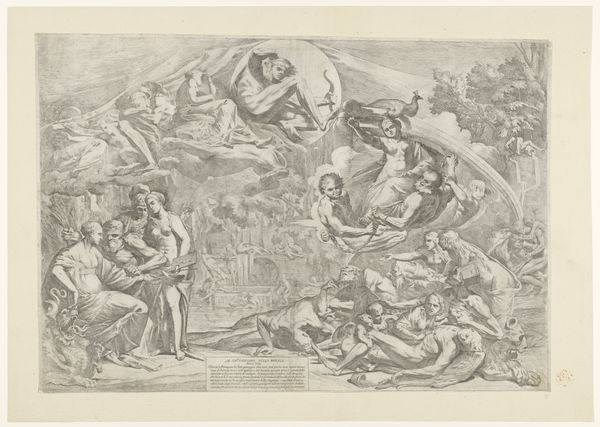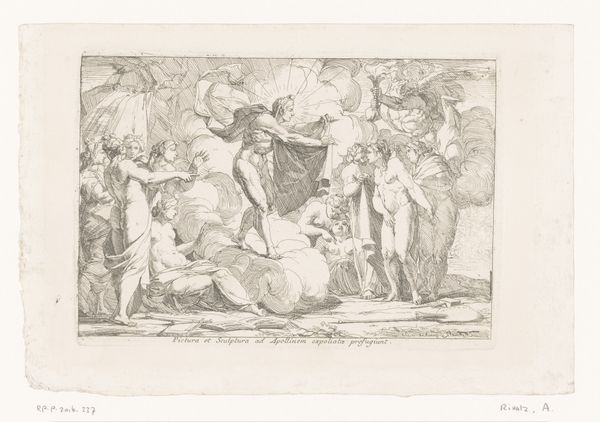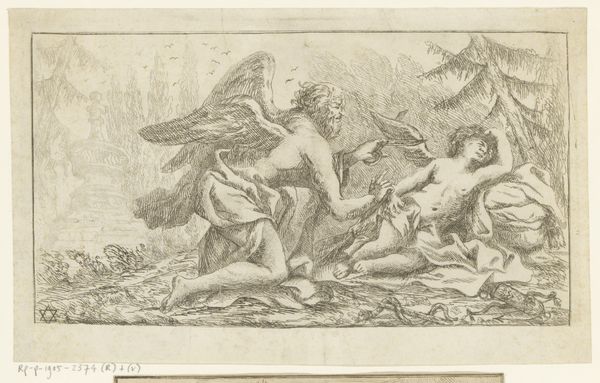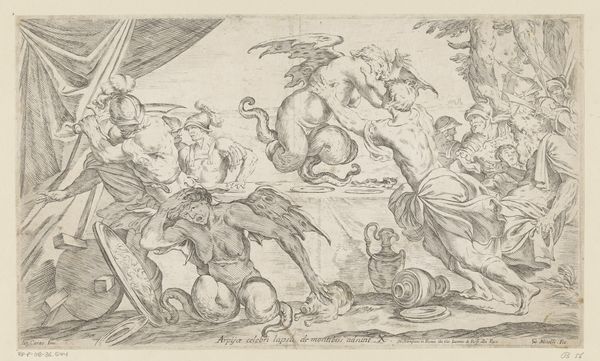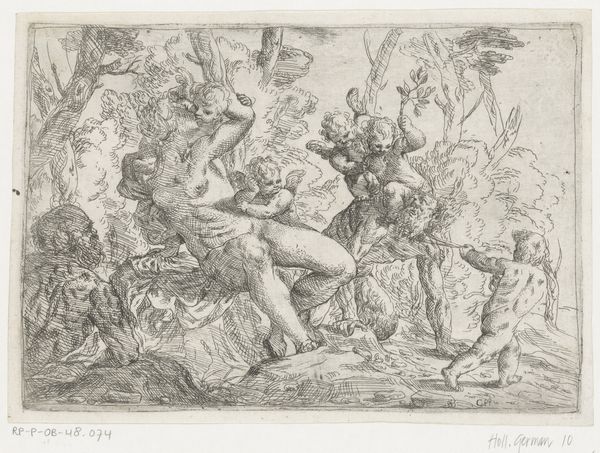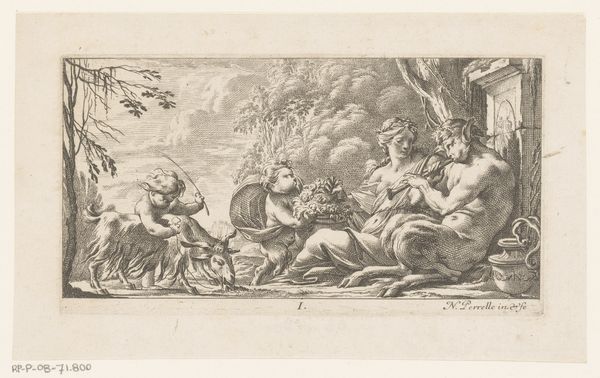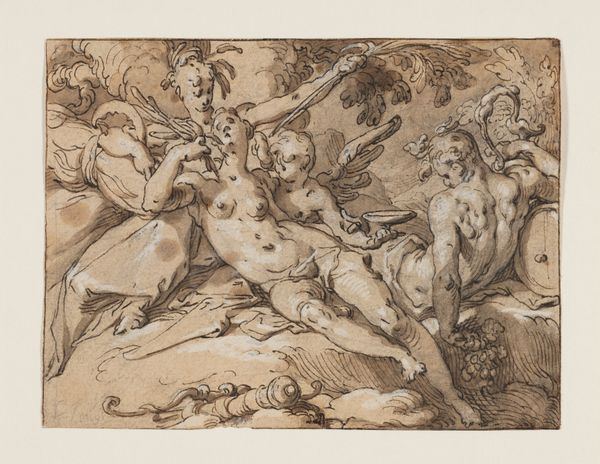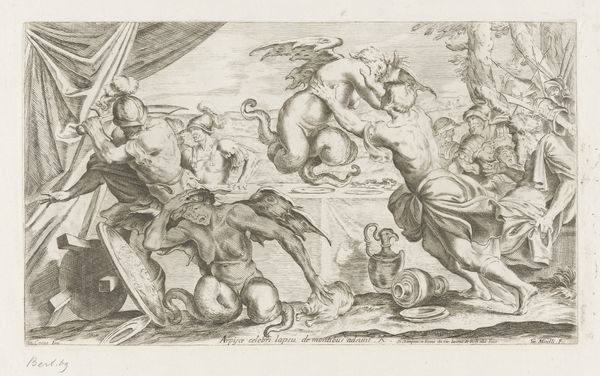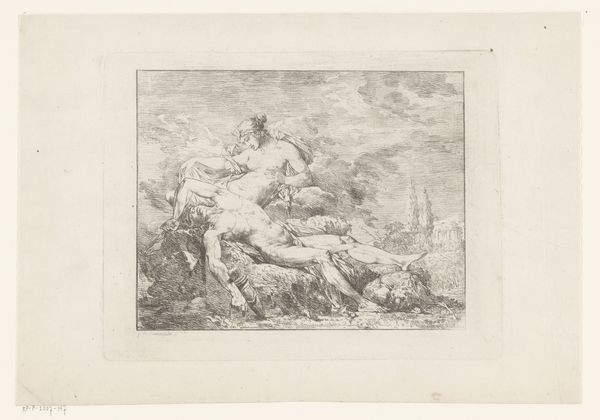
Hieronymus die een visioen beleeft van Christus aan het kruis 1600 - 1650
0:00
0:00
anonymous
Rijksmuseum
print, engraving
#
narrative-art
#
baroque
# print
#
old engraving style
#
figuration
#
line
#
engraving
Dimensions: height 172 mm, width 280 mm
Copyright: Rijks Museum: Open Domain
Editor: Here we have an engraving titled "Hieronymus experiencing a vision of Christ on the cross," made sometime between 1600 and 1650 by an anonymous artist. I’m immediately struck by the dynamic composition—St. Jerome reclines while the vision bursts forth with incredible energy. What’s your take on this piece? Curator: This print presents a fascinating intersection of the personal and the political. Jerome’s intense, almost ecstatic vision needs to be contextualized. How does the artist use religious ecstasy here? I think this image engages with Counter-Reformation ideologies, leveraging St. Jerome’s authority as a translator of the Bible. What power does that vision of a tortured Christ possess in that historical moment, during ongoing religious wars? Editor: So, it’s not just about religious devotion, but about religious authority and potentially… propaganda? Curator: Precisely. Look at the graphic clarity and line work—it’s designed for wide dissemination. And think about *who* is having this vision – St. Jerome. Consider who St. Jerome represents – the institutional Church, certainly, but he also stands as a scholar, and a (masculine) body subjected to intense devotion. The anonymous artist is making a powerful statement about religious truth, especially aimed at dissenting voices that questioned orthodox authority in that time period. Is the intent here spiritual transcendence, or to signal who holds interpretive power? Editor: That definitely shifts how I see it! The intensely rendered body of St. Jerome doesn't seem simply pious anymore. I had just been focusing on the artistic virtuosity on display here. Curator: It’s a reminder that art always operates within a socio-political context. Examining it as such opens richer interpretive possibilities. This lens illuminates questions around power, and identity. Editor: I’ll never look at religious art the same way again! Thank you. Curator: My pleasure. This analysis invites us to challenge established perspectives, revealing nuanced readings within the history of art.
Comments
No comments
Be the first to comment and join the conversation on the ultimate creative platform.
